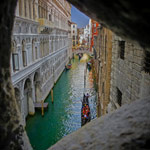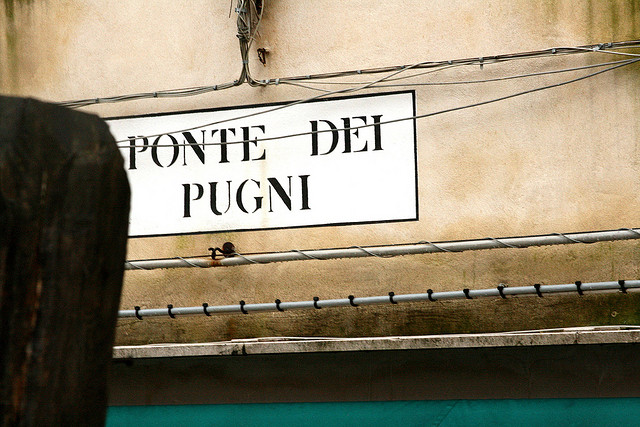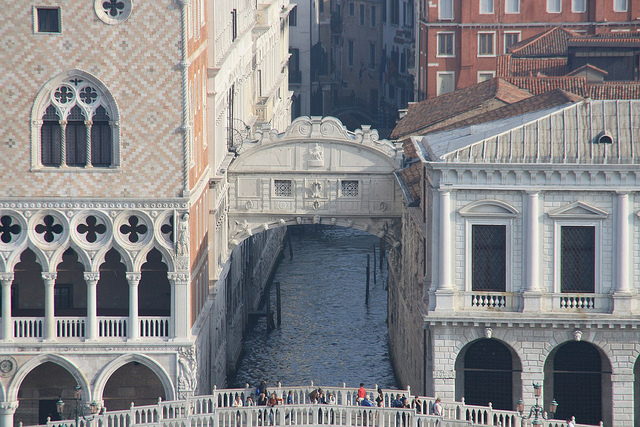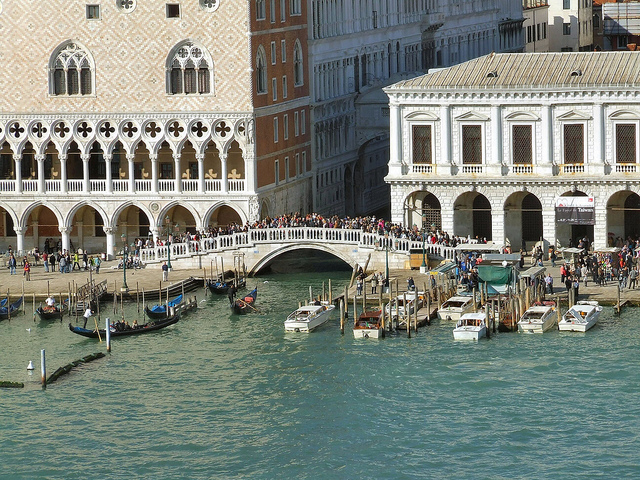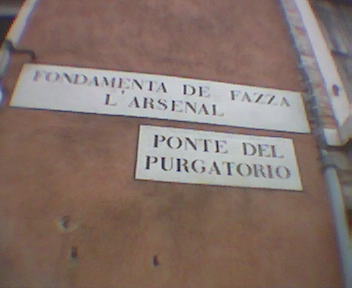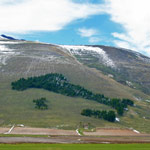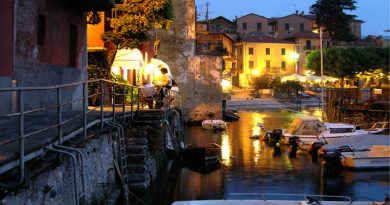Top 8 Venetian bridges with the most unusual names
(updated October 6, 2016)
Venice, the Serenissima, is also known as the “City of Bridges“. About 400 bridges connect the 117 small islands and cross the 150 canals of the city. Some of these bridges have been dubbed with the most bizarre or unusual names, often linked to the history of famous, mysterious or lesser known sites and personages of Venice.
1. Ponte dei Pugni (Fighting Bridge)
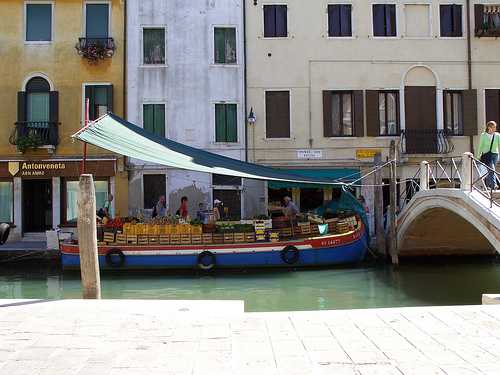
The Ponte dei Pugni (often translated as ‘Bridge of Fists’, but actually meaning ‘Fighting Bridge) owes its name to an ancient tradition known as Venetian bridge wars. The mock battles, or battagliole, arose from rivalries between different factions of Venice. They were fought without any formal or written regulations, usually starting as a partly festive, partly staged sport event, but often with a predictable and deadly outcome.
The battles would take several forms from individual duels, motivated by vendetta, to confrontations between fighting squads composed of thirty to fifty men from the same neighborhood or same occupation, defending factional honor against perceived insults from the other factions or guilds. Clan loyalty and honor was highly prized. Faction members caught changing sides could expect violent reprisal or assassination.
Battles were fought on bridges because they often marked the boundary between two territories. The fight was considered settled when one side had claimed and kept the bridge. The battles were not usually waged with fists, but using any object that an artisan routinely carried with him: the handy stiletto (with a long slender blade and needle-like point) or the pistolese (a robust dagger with diamond cross section, usually held in the left hand). Sharpened sticks or robust cane, known as canne d’India, as well as spiked boat poles (spontoni) used in the city canals were also commonly used.
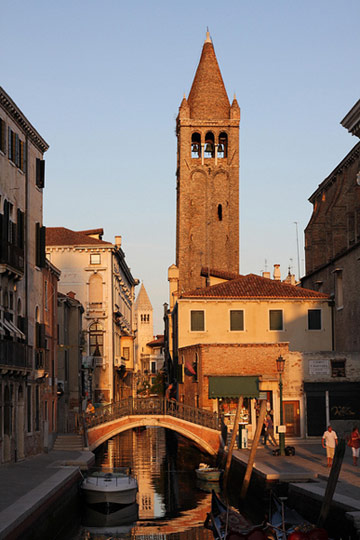
The two main clans formalized in 1548 where the Castellani and the Nicolotti. The Castellani took their name from the district of Castello, while the Nicolotti owed their name to the parish of San Nicolo dei Mendicoli. Before settling in Venice, these two groups came from different places, presumably from Heracleia and Jesolo – two towns on the mainland -. Most historians believe that the battagliole were an imported tradition that began as a rivalry between the towns where immigrants to Venice originally came from.
The Ponte dei Pugni is not the only bridge in Venice with a fighting history. The Ponte della Guerra at Santa Fosca and Diedo bridge at San Marziale have a similar history, but the Ponte dei Pugni, located near Campo San Barnaba in Dorsoduro, is the most famous one.
2. Ponte degli Scalzi (Bridge of the Barefoot)
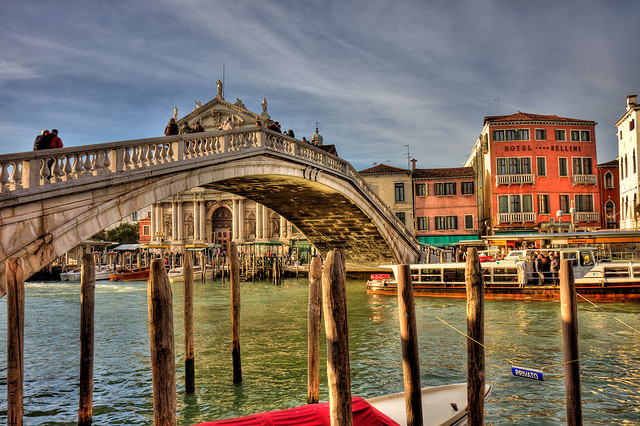
Built in the 1850s, the Ponte degli Scalzi is one of only four bridges in Venice to span the Grand Canal. The bridge connects the sestieri of Santa Croce and Cannaregio. Originally an iron structure modeled on the Accademia bridge, it was replaced by a stone bridge in the 1930s because it was judged excessively ‘modern‘.
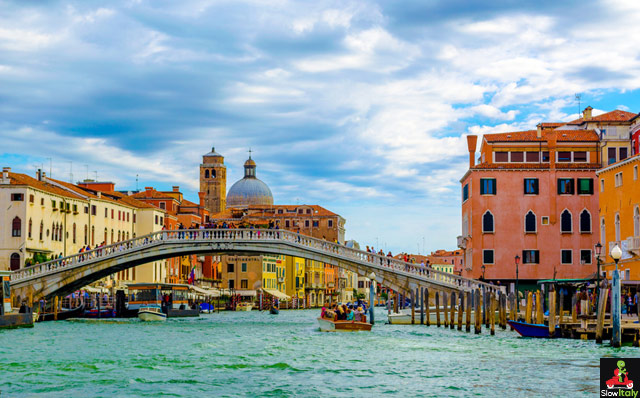
The name is derived from that of the mendicant order of bare-footed friars, Scalzi, whose convent was once located there. The Church of Santa Maria in Nazaret, by Giuseppe Sardi, 1683-89, commonly called Chiesa degli Scalzi, is on the north side, Cannaregio. The church’s ceiling by Tiepolo, one of the master’s greatest works, unfortunately, has been irreparably damaged.
3. Ponte dei Sospiri (Bridge of Sighs)
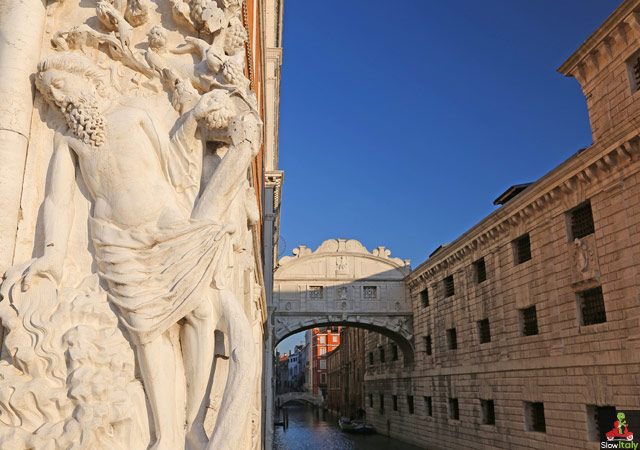
Built in 1597 under the direction of Antonio da Ponte, the white Istrian stone bridge is one of Venice’s most famous landmarks. It connects the Doges’ Palace’s interrogation rooms with the dungeons (Prigioni Nuove), by a covered gallery.
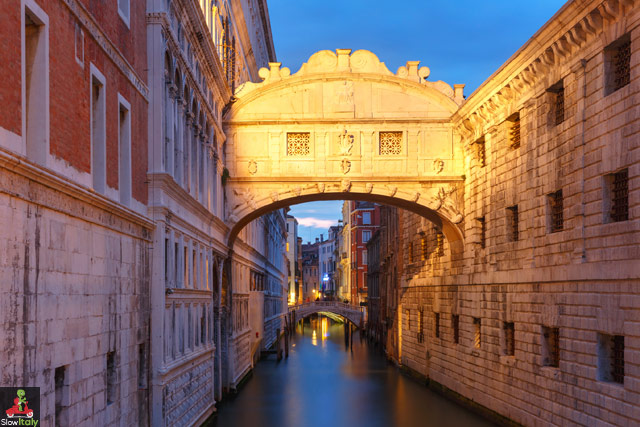
The bridge owes it name to the romantic literary notion that the convicts would sigh at their final view of beautiful Venice before being imprisoned in their dark prison cells. As Mark Twain says about the Bridge of Sighs in Innocents Abroad, one would « descend into the dungeon which none entered and hoped to see the sun again.” Actually, the bridge had two passages, one to the interrogation rooms, where the prisoners were being tortured, and one back to the place where the convicts were either imprisoned or executed.
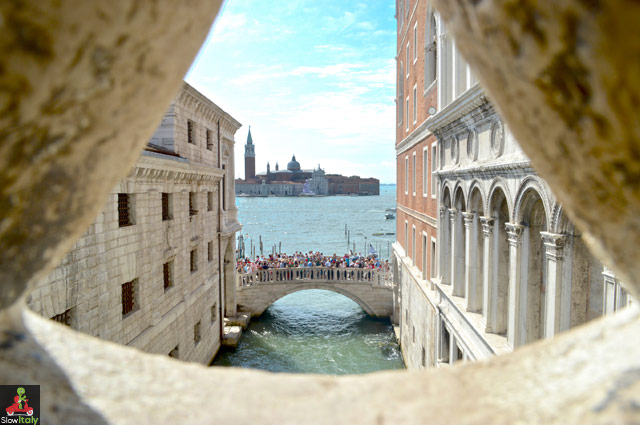
In a letter to his publisher John Murray, written during his self-exile in 1817, Lord Byron describes this particularity of the bridge as follows: It has two passages, – the criminal went by the one to judgement – & and returned by the other to death.
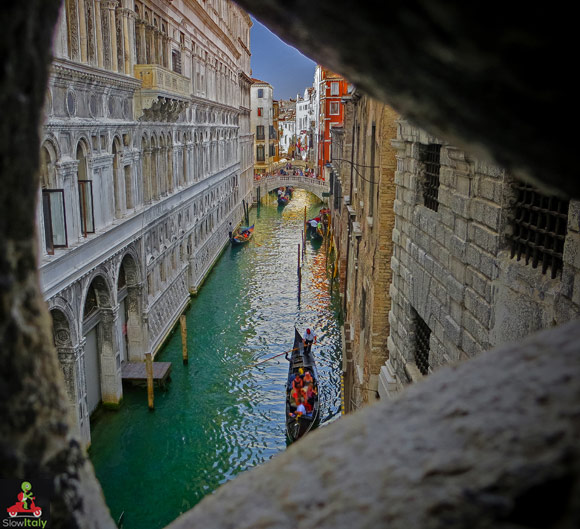
4. Ponte delle Tette (Bridge of Breasts)
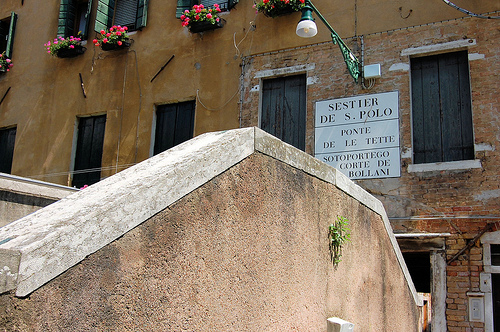
The Ponte delle Tette is a small bridge over the Rialto, leading to Rio Terà delle Carampane, one of the red-light districts of medieval Venice. The area was named after the Ca’ Rampani (literally ‘house of the Rampani’), a palace of the 1500s built by the patrician Rampani family from Ravenna.
In the 1600s, Rio Terà delle Carampane became a specially designated ghetto where the city had decreed all local streetwalkers must live. The Serenissima viewed prostitutes as the lesser vice, tolerated to deter Venetians from illicit behavior deemed ‘unnatural’ by the authorities of that time. So, authorities decided to take measures to promote prostitution; the ladies of the night were encouraged to display their bare breasts from the windows that were visible from the bridge, hence the name.
The word carampane is still used as a slang term to describe a (faded) beauty of the night.
5. Ponte della Paglia
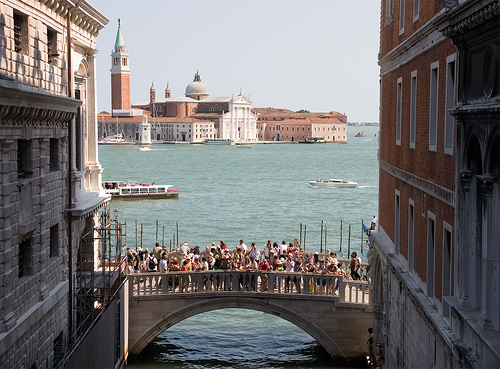
The Ponte della Paglia connects the Molo with the Riva dei Schiavoni. It is so called because it was here that the bales of straw destined to the Doge’s palace and prisons were unloaded. The straw was used for the prisoners’ cells and the garrisons of the Doge’s Palace. Another explanation is that the bridge owes its name to the fact that it was covered with straw to allow the horses of Venice to easily cross the bridge.
The bridge was originally made of wood, but was then rebuilt in stone in 1360, and subsequently enlarged in 1847 into the present bridge, but modeled on the old bridge.
6. Ponte del Diavolo (Devil’s bridge)
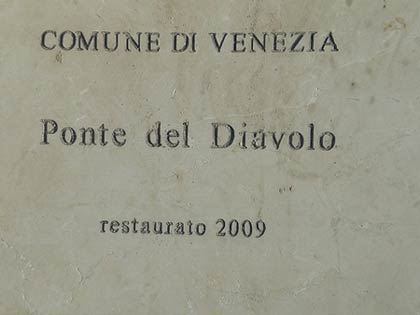
Located in Torcello, the Ponte del Diavolo is one of only two bridges shaped like the ancient Venetian bridges, i.e. with no parapets (the other one being the Ponte Chiodo in Cannaregio). The Ponte del Diavolo was originally built in the 15th century, but rebuilt after WWI. Devil’s bridges frequently reflect the fact that they were built under such challenging conditions that successful completion of the works was very complicated. Indeed, the central arch of Torcello’s Ponte del Diavolo is supported by a huge rock said to have been thrown into the river by the devil. Not only are Devil’s bridges often built under difficult conditions, but they are also often built overnight, which is also reflected in the legend surrounding Torcello’s Ponte del Diavolo, said to have been built in only one night.
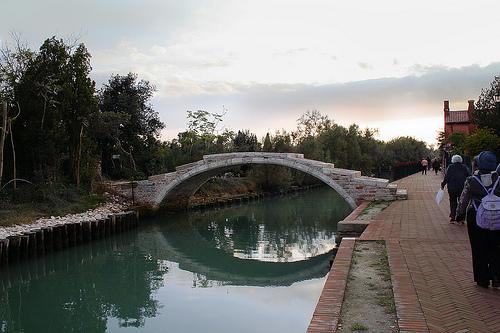
7. Ponte del Soccorso (Bridge of Salvation/Assistance)
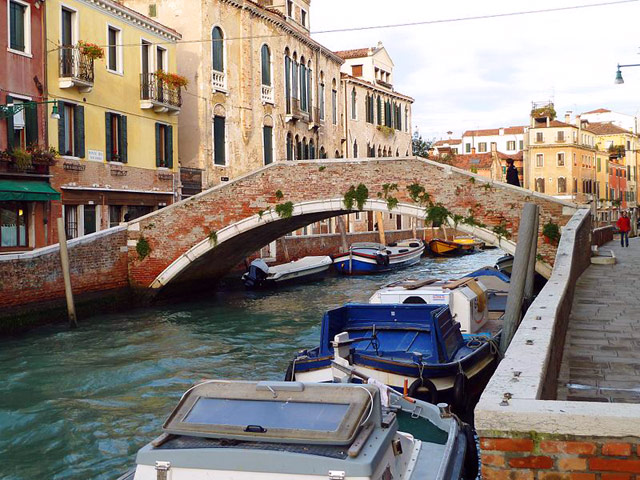
The bridge is named after the church Santa Maria del Soccorso and the Casa del Soccorso, which were part of a charitable institution aimed at aiding unwed mothers and other women who ‘had lost their virtue’.
The complex was founded by poetess, courtesan and philanthropist Veronica Franco (1546-1591), who used her network and cultural authority as a successful author to push her social reforms to aid these women.
Her passionate support of defenseless women and strong convictions about inequality are described in the book, The Honest Courtesan, Veronica Franco, Citizen and Writer in Sixteenth-Century Venice, by Margaret Rosenthal.
8. Ponte dell’Inferno, Ponte del Purgatorio and Ponte del Paradiso
The three bridges are directly related to Italy’s most famous epic poem, the Divine Comedy by Dante. During one of Dante’s visits to Venice he saw workers sweating over vats of boiling pitch, which they used when caulking and refitting their ships. This view inspired him to write part of the ‘Inferno’.
You might also like:
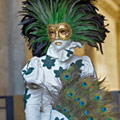
Carnival of Venice: history and meaning of the different types of Venetian masks
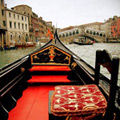
Squero San Trovaso: where Venetian gondolas are born
Photo credits (top to bottom): Ponte dei Pugni by denvilles_duo and j_uli_ee; Ponte degli Scalzi by efilpera; Ponte dei Sospiri (sunset) by Chris Chabot; Ponte dei Sospiri by Martin Wippel; Vegan Traveller; Ponte della Paglia by Dimitri Shakin; Ponte della Paglia by Michael Gaylard; Ponte del Soccorso by Abxby; Ponte del Purgatorio by Michelle’s Mental Clutter.

